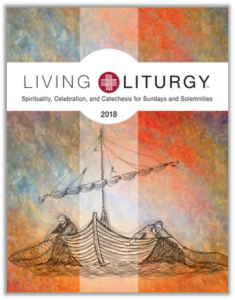 About Liturgy
About Liturgy
The gradual nature of seasons: Our secular calendar marks the days one season ends and another begins. Yet in our daily life, that line is not as sharply defined. Fall colors gradually turn to winter cold as, day by day, the temperatures drop and we add, one by one, another layer of clothing. We naturally experience the change in the seasons gradually. Our experience of the liturgical seasons should be the same.
Hispano-Latino cultures understand well this gradual shift in liturgical seasons. The tradition of Las Posadas (“the inns”) and the Filipino custom of Simbang Gabi (“church in the night”) are joyful celebrations of light and color, prayer and music, fiesta and food during the nine days leading up to Christmas. The growing anticipation of Advent and the delight of Christmas harmonize together during these transitional days, and those who celebrate them are not afraid to let elements of one season flow into the other.
Does this mean we shouldn’t worry that Christmas began in October on our commercial calendars? Of course not. We should continue to celebrate each season fully with their unique characteristics at their proper times. Yet we should also take care to not be so rigid when we hear a stray Christmas carol in Advent or see Christmas trees all around us that we fail to embody in our words and actions the promised joy of either liturgical season.
Especially this year, when the Fourth Sunday of Advent is also Christmas Eve, we can take a cue from nature and these novenas and allow a little bit of Christmas to infiltrate the final days of Advent. For example, during the last week of Advent, daily incorporate environmental elements of Christmas into your worship space, such as bare evergreen wreaths, red holly berries, and white swaths of fabric along with your Advent violet, so that on the last Sunday of Advent, Christmas is on the brink of burgeoning all about us. Most of all, let your joyful attitude during these busy days be your best expression of the true meaning of both seasons..
Excerpt from Living Liturgy: Spirituality, Celebration, and Catechesis for Sundays and Solemnities, Year B, 2018, by Brian Schmisek, Diana Macalintal, and Jay Cormier, published by Liturgical Press. Copyright © 2017, Order of Saint Benedict, Collegeville, Minnesota. All rights reserved. Used with permission..
About Living Liturgy
If you enjoyed this short catechetical article of mine on liturgy, music, or the RCIA, I encourage you to check out the entire Living Liturgy 2018 resource because you will get so much more than just reading from my excerpts. Brian Schmisek and Jay Cormier did a fantastic job of providing a wealth of theological information, pastoral reflections, and practical resources for every Sunday and solemnity of the entire year. Not only do you get all the readings, opening prayers, and Gospel verses for every feast, but you also get scripture exegesis, homily points, psalm response reflections for your psalmists, liturgical preparation questions for all your liturgical ministers and catechists, a lector’s pronunciation guide, sample penitential act tropes, and intercessions, including the presider’s introduction and concluding prayer for those intercessions.
When the 2018 edition debuted at last summer’s NPM convention, it completely sold out from the Liturgical Press booth! I was at the booth for most of the week, and I heard so many great comments from participants of how beautiful and useful this resource looks. So many more also told me how they have relied so much on this resource that was begun by Joyce Ann Zimmerman, CPPS, and Kathleen Harmon, SNDdeN, in 1999!
I have been blessed to be part of this project that continues the good work begun by Sr. Joyce Ann and Sr. Kathleen and LitPress, and I pray that our team’s contribution through Living Liturgy will help you every week of the new liturgical year.



Leave a Reply